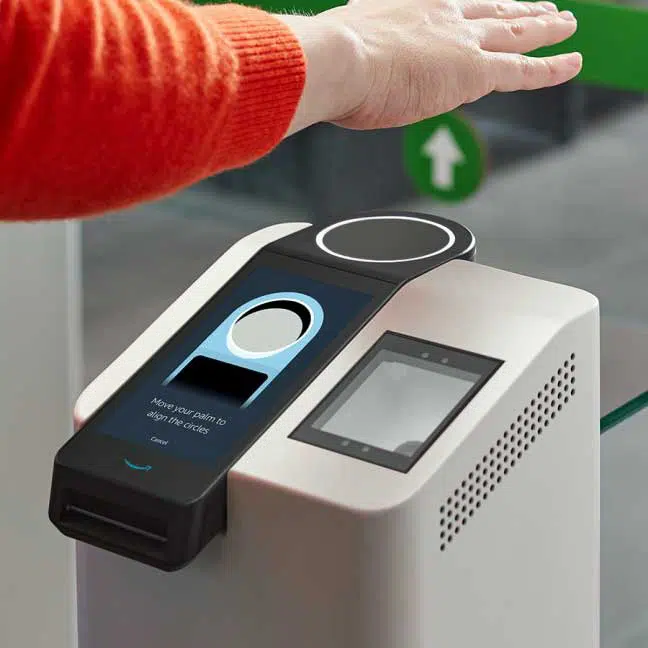Amazon.com Inc. is expanding its Amazon One biometric payment technology to Whole Foods stores in Seattle. Amazon, which launched Amazon One in its two Seattle Amazon Go stores last September, will initially roll the technology out to a Whole Foods store near its headquarters and eventually to seven more stores in the Seattle area in the coming months. Amazon bought Whole Foods in 2017 for $13.7 billion. The organic grocery chain has 400 locations.
Amazon One enables consumers to pay for items by scanning their palm. To open an Amazon One account, a consumer inserts a credit card into an Amazon One terminal, then waves her palm over the terminal so it can be scanned. The palm print is then linked to the consumer’s credit card. Amazon One uses computer-vision technology and selects the most distinct identifiers to create a palm signature. Consumers can register one or both palm prints.
To pay for purchases using her palm print, a consumer waves her hand over the scanner at checkout. The consumer’s card is automatically billed for the items in her shopping cart. Consumers can also link their Amazon account to Amazon One, allowing them to manage their account and see their purchase history online.

Amazon’s decision to expand Amazon One beyond Amazon Go stores, which debuted in 2018, raises the question whether the company is taking the next step toward making Amazon One technology available to other merchants. The online giant said it planned to do so when Amazon One launched.
The argument that retailers would not want to license or purchase technology from a dominant competitor such as Amazon seems to be weakening. Hudson, which has more than 1,000 convenience-like stores in airports, commuter hubs, and other tourist destinations, in February opened its first Hudson Nonstop store using Amazon Go technology at Dallas Love Field Airport.
“The deal with Hudson shows other retailers would be inclined to license technology from Amazon,” says Raymond Pucci, director for the merchant-services practice at Mercator Advisory Group Inc. “Consumers like contactless payment technology and merchants are looking for state-of-the-art contactless technology. There are merchants that would not want to do business with Amazon, but for those merchants that want [access to Amazon’s pay-by-palm technology] and feel they can work out terms with Amazon, [they] would probably do so.”
Nevertheless, Pucci acknowledges Amazon One still faces challenges in the market. “There are alternative contactless payment technologies available and the cost to implement Amazon One is a factor in whether merchants will accept it,” Pucci says. “Amazon’s stores are a great testing ground, and how widely adopted the technology is by consumers will tell whether it makes sense for other merchants to roll it out.”





